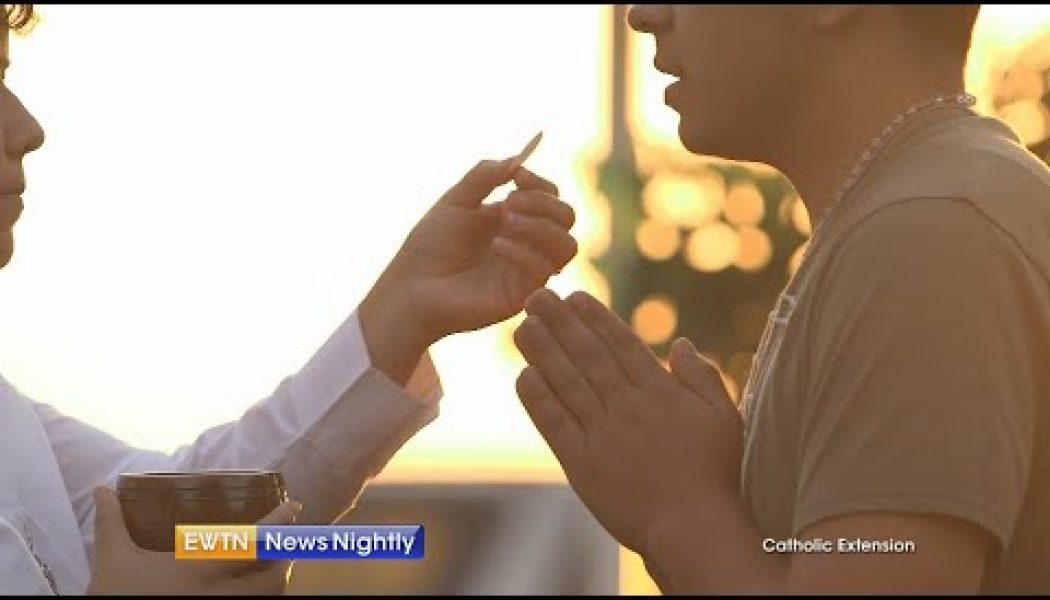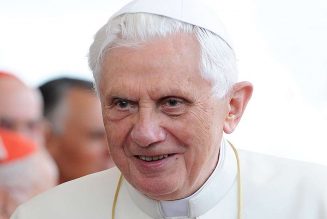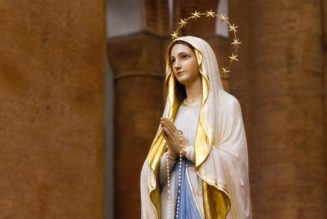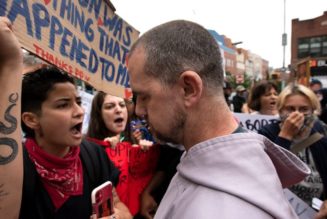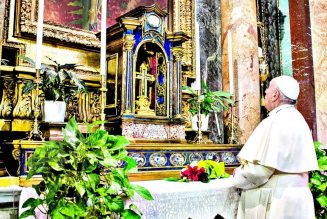Does anyone remember the coronavirus pandemic?
Think back a week or even two. You may remember headlines about tensions between people who wanted to “open up” the economy at the local level and others who wanted to continue with lockdowns or other “shelter at home” policies for citizens as a whole (as opposed to those uniquely at risk). This was not strictly a left vs. right thing, but the further one went to the extremes — extended lockdowns vs. strong attempts to “return to normal” — the more political things became.
That seems so long ago. Still, I would like to flash back to something that happened recently in Maryland, the state I called home for more than a decade. Here at GetReligion, we have been spending quite a bit of time focusing on coverage of the overwhelming majority of religious flocks that are trying to return to some form of corporate worship — while stressing safety and social-distancing principles.
Here’s the Catholic News Agency headline: “Maryland county lifts ban on Communion.”
My question: Did you see any mainstream news coverage of this story? The overture:
Howard County, Maryland, has reversed a policy that banned consumption of any food or drink during religious services, effectively preventing the licit celebration of Mass.
A county spokesman told CNA May 28 the prohibition will be removed, and faith leaders will be consulted on future guidelines for church reopenings amid the coronavirus pandemic.
On Tuesday, Howard County Executive Calvin Ball issued an executive order delineating reopening regulations and conditions for houses of worship and other entities deemed “non-essential” by the state of Maryland.
“There shall be no consumption of food or beverage of any kind before, during, or after religious services, including food or beverage that would typically be consumed as part of a religious service,” that order said.
Ever since seeing that news item, I have been running online searches — of news sources and then the Internet as a whole — for mainstream news coverage of this amazing example of a clash between government officials and worship in mainstream religious institutions.
Please click here and scan the results of a new search for the terms “Howard County,” “Communion” and “Maryland.”
What do you see in these results? Apparently, this was NOT an important news story and it appears to have drawn next to zero coverage from mainstream newsrooms, as opposed to religious and/or “conservative” websites and publications.
At the very least, where was The Baltimore Sun team? Are my searches missing a story or two? Any television coverage from newsrooms inside the Washington, D.C., or Baltimore beltways?
Now, I understand that Howard County has a reputation. There is a reason that locals refer to this area as “The People’s Republic of Howard County.” It’s amazing how intrusive some of the local laws are, in terms of controlling many activities in daily life.
Catholic church officials protested this move and tried to get coverage. Back to that CNA report:
… (The) Archdiocese of Baltimore said it had “serious concerns” about the policy, and that the “Eucharist is central to the faith lives of Catholics.”
The consumption of the consecrated species at Mass, at least by the celebrant, is an integral part of the Eucharistic rite. Rules prohibiting even the celebrating priest from receiving the Eucharist would ban the licit celebration of Mass by any priest.
Note: This county order would have even shut down celebrations of the Eucharist that people watched on their computers at home.
Apparently, the Catholic leaders were successful in getting these rules overturned sooner, rather than later. That victory would have been a valid news story, as well.
The question here, of course, is not whether it is important for religious leaders to cooperate with efforts to fight COVID-19. The question is whether religious groups were being hit with regulations that were more strict than those applying to other groups. As one GetReligion reader put it, in an email, why can people at drive-ins find a safe way to bring me burgers and fries, but my priest cannot let me receive a consecrated host at Mass?
In a recent “Crossroads” podcast post, I created a typology describing the conflicts that journalists were seeing during the coronavirus crisis. At the time I wrote this, the symbolic issue was whether government officials could crack down on drive-in worship services, while ignoring similar parking lots full of cars gathered for other kinds of rites (at liquour stores, for example). I argued that there were five camps out there:
They are (1) the 99% of religious leaders who cooperated and took worship online, (2) some religious leaders who (think drive-in worship or drive-thru confessions) who tried to create activities that followed social-distancing standards, (3) a few preachers who rebelled, period, (4) lots of government leaders who established logical laws and tried to be consistent with sacred and secular activities and (5) some politicians who seemed to think drive-in religious events were more dangerous than their secular counterparts.
Now, we are past drive-in worship and on to stage-two worship that includes social-distancing principles and increased efforts at sanitation. The camp No. 2 is now the norm, while there are still some churches rebelling and jumping into No. 3.
The Howard County orders were clearly an example of No. 5, with little attention given to “equal access” principles that attempted to apply similar rules to religious and secular groups and activities.
Clearly, journalists think that these issues are newsworthy when someone like Donald Trump gets involved in the fine details. See this chunk of a recent Washington Post report: “White House and CDC remove coronavirus warnings about choirs in faith guidance.”
The Trump administration with no advance notice removed warnings contained in guidance for the reopening of houses of worship that singing in choirs can spread the coronavirus. …
(The) administration released pandemic guidance for faith communities after weeks of debate flared between the White House and the Centers for Disease Control and Prevention. Those guidelines posted on the CDC website included recommendations that religious communities “consider suspending or at least decreasing use of choir/musical ensembles and congregant singing, chanting, or reciting during services or other programming, if appropriate within the faith tradition.”
It added: “The act of singing may contribute to transmission of Covid-19, possibly through emission of aerosols.” … That version was replaced by updated guidance that no longer includes any reference to choirs or congregant singing and the risk for spreading virus. The altered guidance also deleted a reference to “shared cups” among items, including hymnals and worship rugs, that should not be shared. The updated guidelines also added language that said the guidance “is not intended to infringe on rights protected by the First Amendment.”
Now, as a choir member in an Eastern Orthodox parish — in which roughly 75% of a Divine Liturgy is sung — I have been reading up on that important issue. There’s no question that singing can spread the virus further than normal speech or, especially, silence.
At my church, we have about 25 people — with a planned rotation among members of the parish — attending a service. We have four singers who are a safe distance from members of the congregation (individuals or families that are six feet or more apart) and are facing away from other worshippers. We are doing what we can to be safe, while leaning into a “new normal” during the next stage of this crisis.
Journalists: There are important stories out there. Please cover them.
A few believers are rushing into danger. A few government leaders continue to act as if the practice of religious faith is a uniquely dangerous activity — as opposed to be half of the First Amendment.
Let us attend.
